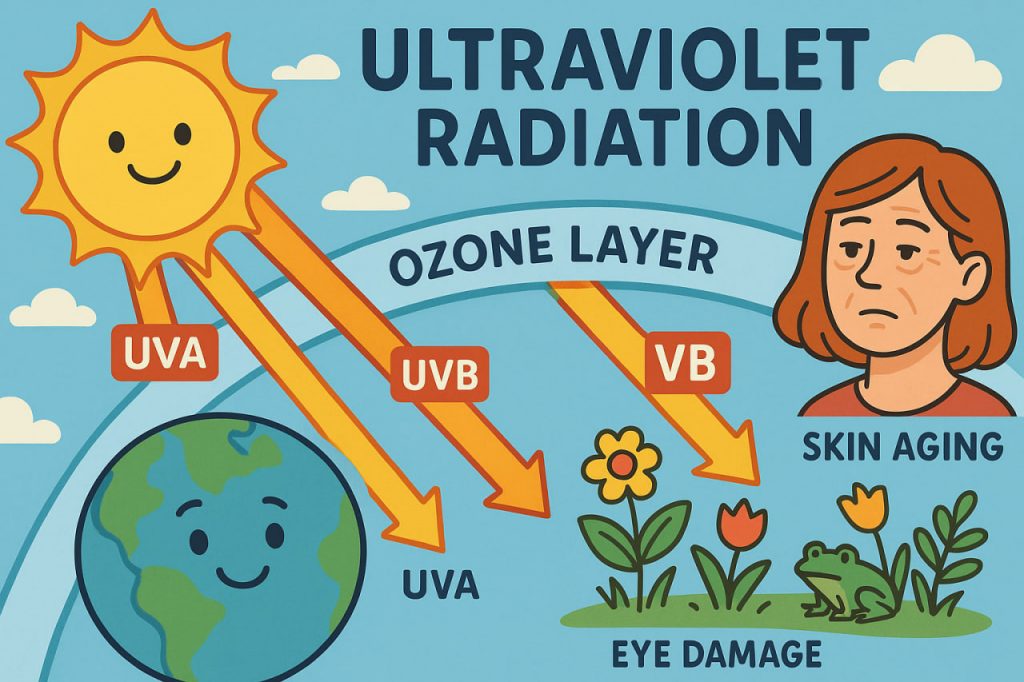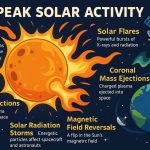Ultraviolet (UV) radiation is a form of electromagnetic radiation that comes primarily from the Sun. While it plays important roles in nature and human health, overexposure to UV radiation can have harmful effects. Understanding what UV radiation is and how it interacts with our environment helps us take precautions while benefiting from its positive aspects.
The Basics of Ultraviolet Radiation
UV radiation lies in the electromagnetic spectrum between visible light and X-rays. It is invisible to the human eye and is categorized into three main types based on wavelength:
- UVA (320–400 nm): Penetrates deep into the skin; contributes to aging and wrinkles.
- UVB (280–320 nm): Less penetrating but more energetic; causes sunburns and DNA damage.
- UVC (100–280 nm): The most dangerous form, but fortunately it is mostly absorbed by Earth’s atmosphere and does not reach the surface.
The Sun is the main source of UV radiation on Earth, though artificial sources such as tanning beds and some industrial equipment also emit it.
Natural Protection: The Ozone Layer
Earth’s ozone layer, located in the stratosphere, plays a vital role in filtering out harmful UV radiation — especially UVC and most UVB rays. Depletion of the ozone layer due to human-made chemicals like CFCs (chlorofluorocarbons) can increase the amount of UVB reaching the Earth’s surface, raising health and ecological concerns globally.
Effects on Human Health
UV radiation has both beneficial and harmful effects on human health:
- Benefits: Helps the skin produce vitamin D, which is essential for bone health and immune function.
- Risks: Overexposure can lead to sunburn, premature skin aging, eye damage (like cataracts), and skin cancer, especially melanoma.
People with fair skin, a history of sunburns, or frequent exposure without protection are at higher risk for UV-related health problems.
Impact on Ecosystems
UV radiation affects not just humans but also animals, plants, and microorganisms. High levels of UVB can reduce crop yields, harm plankton in oceans (the base of many food chains), and impair amphibian development. Some plants and organisms have evolved protective mechanisms such as UV-absorbing pigments or thicker cell walls to resist damage.
Measuring UV: The UV Index
The UV Index (UVI) is a scale that indicates the daily level of UV radiation expected in a specific location. It ranges from 0 (low) to 11+ (extreme). A higher index means greater potential for skin and eye damage, and it’s advised to take stronger protective measures when the UVI is high.
How to Protect Yourself
To reduce the risks of UV exposure:
- Use sunscreen with a minimum SPF of 30.
- Wear UV-protective sunglasses and hats.
- Avoid sun exposure between 10 a.m. and 4 p.m. when UV levels peak.
- Seek shade and wear long sleeves when outdoors for long periods.
Protecting your skin and eyes is especially important in environments with high UV levels, such as at high altitudes or near reflective surfaces like snow and water.
Glossary
- Ultraviolet (UV) radiation — Invisible energy from the Sun that lies beyond the violet end of visible light.
- UVA/UVB/UVC — Types of UV rays based on wavelength and energy; UVC is most harmful but filtered by the atmosphere.
- Ozone layer — A layer in the Earth’s stratosphere that absorbs most UV radiation.
- UV Index (UVI) — A daily rating scale of UV radiation intensity to help the public protect themselves.


